You Performed the Experiment Using Air Which We Know Is Actually
By their teens, students are set up to tackle some exciting and fascinating easily-on projects. Some science experiments for high schoolhouse are just avant-garde versions of simpler projects they did while they were younger, with detailed calculations or fewer instructions. Others give them a chance to use fire, chemicals, and other materials they weren't fix for earlier. But all of them provide fantastic learning opportunities.
Many of these science experiments for high school are intended for classroom labs, but virtually can be adapted to get science off-white projects too. Merely consider variables that you lot can change up, like materials or other parameters. That changes a classroom lab into a truthful scientific method experiment!
Plus, if yous're looking to become your students involved in an awesome STEM challenge to create change in your customs, check out Samsung's Solve for Tomorrow contest. Your school could win a share of $2 million in prizes!
(Simply a heads upward, WeAreTeachers may collect a share of sales from the links on this folio. We just recommend items our squad loves!)
- Biology Experiments
- Chemistry Experiments
- Physics Experiments
- Engineering science Experiments
Biology Experiments for High School
When it comes to biology, science experiments for high school students ordinarily bring dissection to heed. But there are plenty of other useful labs and easily-on projects for teens to try. Here are some of our favorites.
i. Extract Deoxyribonucleic acid from a strawberry
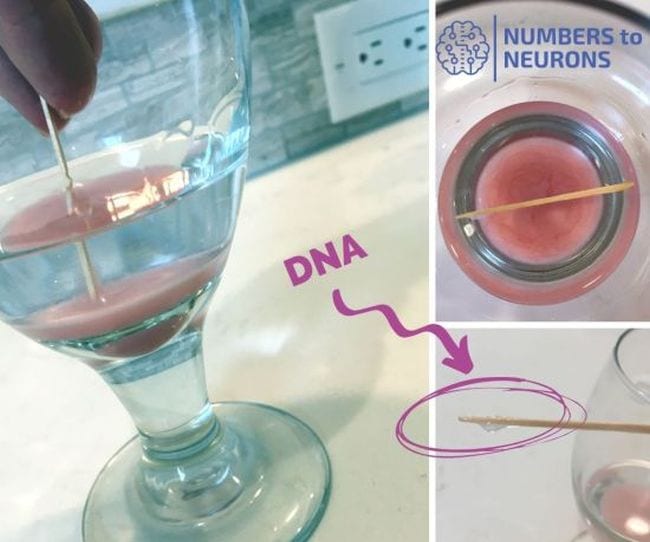
Y'all don't need a lot of supplies to perform this experiment, but it's impressive nonetheless. Turn this into a science fair project past trying information technology with other fruits and vegetables too.
Learn more: Strawberry DNA/Numbers to Neurons
2. Recreate Mendel's pea found experiment
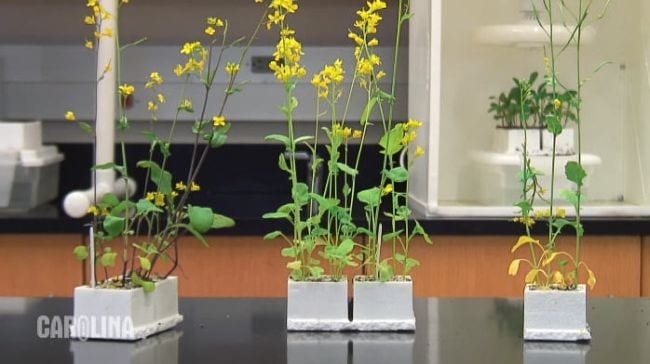
Gregor Mendel's pea plant experiments were some of the outset to explore inherited traits and genetics. Recreate his cross-pollination experiments with a multifariousness of pea plants you've grown yourself.
Acquire more than: Mendel's Pea Plants/Dear to Know
3. Make plants movement with light
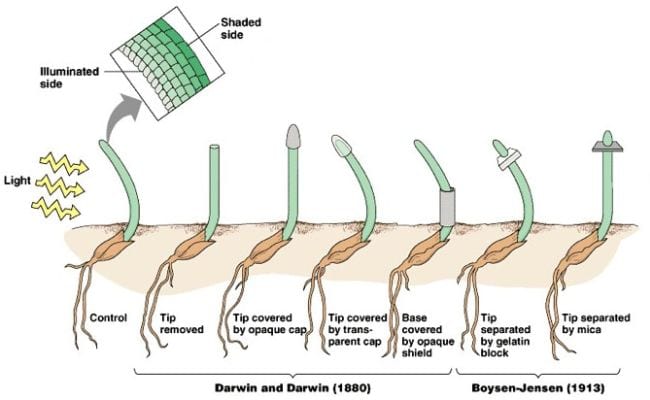
Past this age, kids know that many plants motion toward sunlight, a process known as phototropism. So scientific discipline experiments for loftier school students on this topic need to innovate variables into the process, like covering seedling parts with different materials to see the effects.
Learn more: Phototropism/Science Buddies
4. Test the five-second rule
We'd all like to know the answer to this one: is it really safe to eat food you've dropped on the floor? Design and carry an experiment to find out (although nosotros call up we might already know the answer).
five. Gustatory modality foods to find your threshold for sour, sweet, and bitter
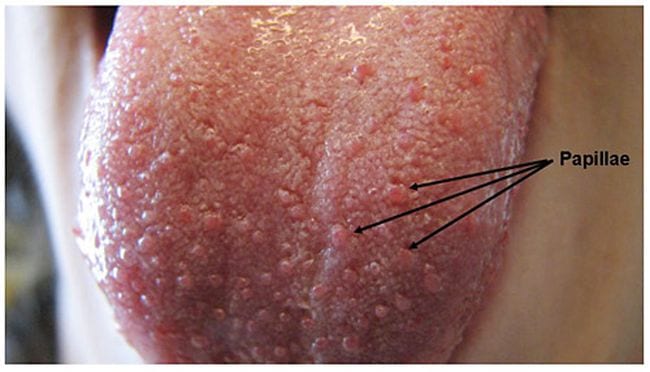
The sense of taste is fascinating—what some people think is succulent, others only can't stand. Try this experiment to exam subjects' taste perceptions and thresholds using a series of diluted solutions.
Learn more than: Gustatory modality Threshold/Science Buddies
6. Consummate a field survey
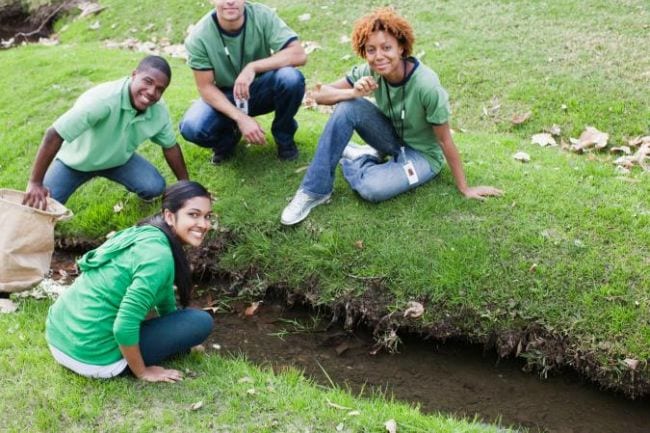
Pedagogy students to conduct field surveys opens up the possibility of lots of dissimilar science experiments for high school. Bear witness them how to find an expanse over time, record their findings, and clarify the results.
Larn more: Field Survey/Dearest to Know
7. See the furnishings of antibiotics on bacteria
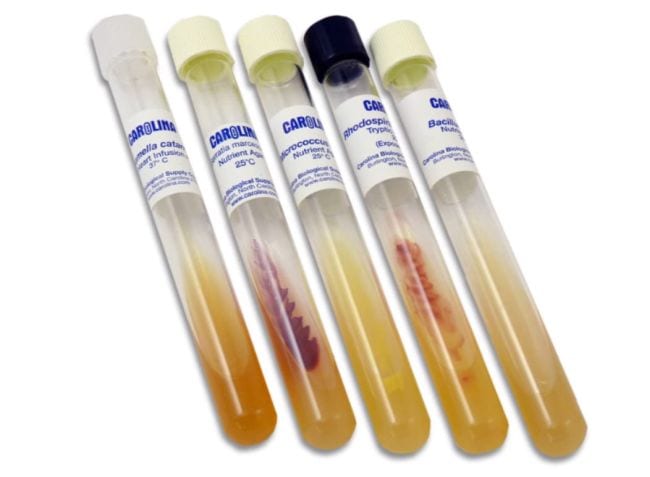
Bacteria can exist divided into ii groups: gram-positive and gram-negative. In this experiment, students first determine the 2 groups, so attempt the effects of various antibiotics on them. You lot tin can get a gram stain kit, bacillus cereus and rodospirillum rubrum cultures, and antibiotic discs from Home Science Tools.
Learn more than: Antibiotics Project/Dwelling Science Tools
8. Run across the carbon cycle in action
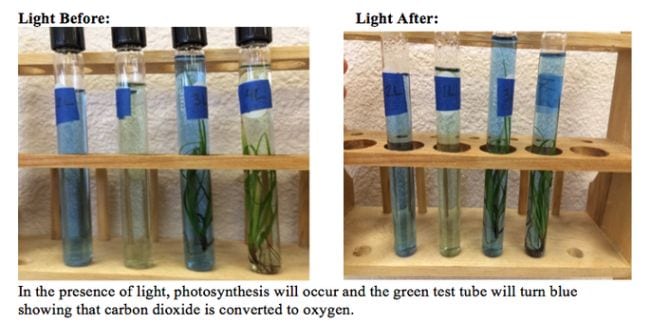
We know that plants accept in carbon dioxide and give off oxygen, right? Well, this experiment helps you prove that and see the upshot light has on the process.
Learn more: Carbon Cycle/Science Lessons That Stone
9. Look for cell mitosis in an onion
Cell mitosis (partition) is actually easy to see in action when yous look at onion root tips under a microscope. Students will be amazed to meet science theory go scientific discipline reality, right before their eyes.
10. Examination the effects of disinfectants
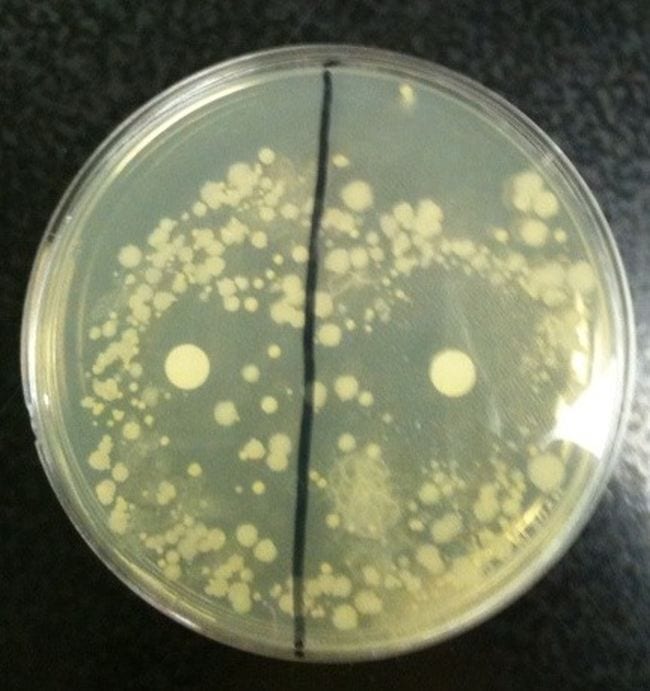
Grow bacteria in a petri dish along with newspaper disks soaked in various antiseptics and disinfectants. Y'all'll be able to see which ones finer inhibit leaner growth.
Larn more: Antiseptics and Disinfectants/Amy Chocolate-brown Scientific discipline
Chemistry Experiments for High School
Perhaps no form is better suited to science experiments for high school kids than chemistry! Bunsen burners, beakers and test tubes, and the possibility of (controlled) explosions? Students volition love it!
11. Measure the calories in various foods
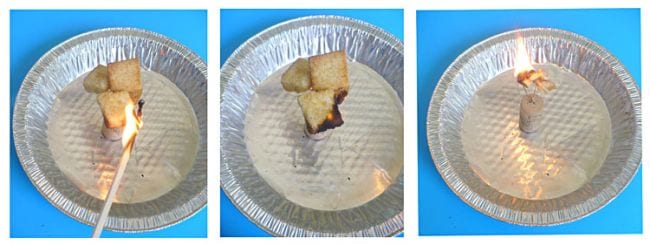
How practice scientists decide the number of calories in your favorite foods? Build your own calorimeter and find out! This kit from Dwelling Science Tools has all the supplies you'll need.
Learn more: DIY Calorimeter/Science Buddies
12. Detect latent fingerprints
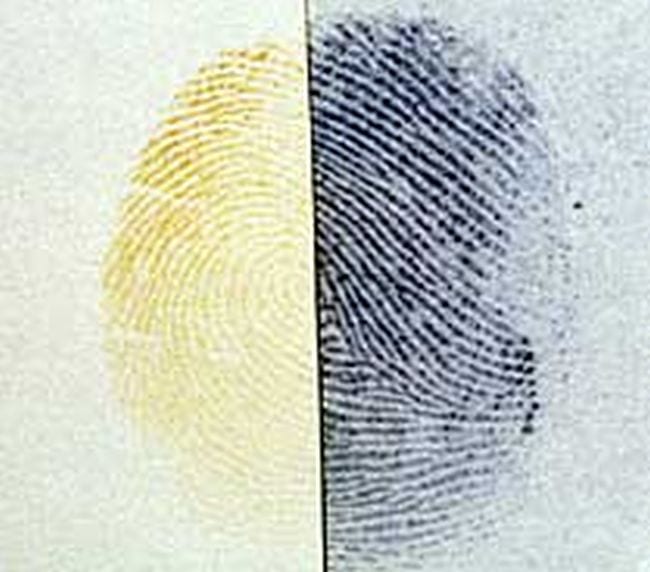
Forensic science is engrossing and tin lead to important career opportunities too. Explore the chemical science needed to detect latent (invisible) fingerprints, just like they practice for crime scenes!
Acquire more than: Latent Prints/Science Fair Extravaganza
thirteen. Utilise Alka-Seltzer to explore reaction rate
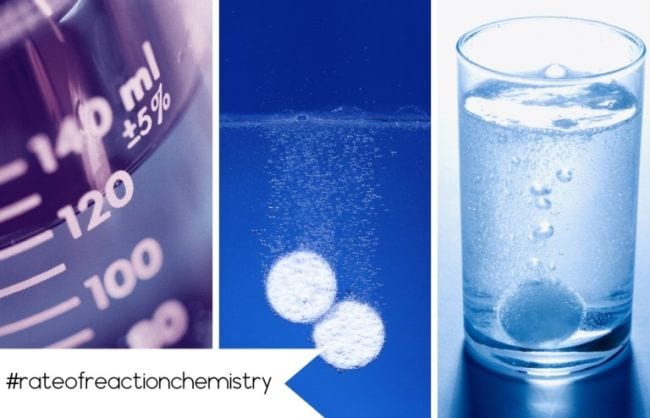
Tweak this basic concept to create a diverseness of science experiments for high school students. Change the temperature, area, pressure, and more to see how reaction rates alter.
Larn more: Reaction Rate/Numbers to Neurons
14. Determine whether sports drinks provide more electrolytes than OJ
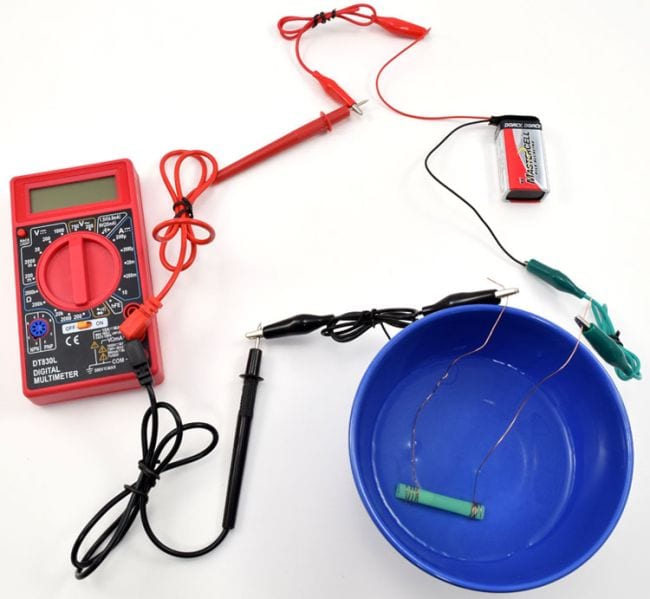
Are those pricey sports drinks really worth it? Try this experiment to observe out. You lot'll demand some special equipment for this one; buy a complete kit at Domicile Science Tools.
Learn more than: Electrolytes Experiment/Science Buddies
15. Extract bismuth from Pepto-Bismol
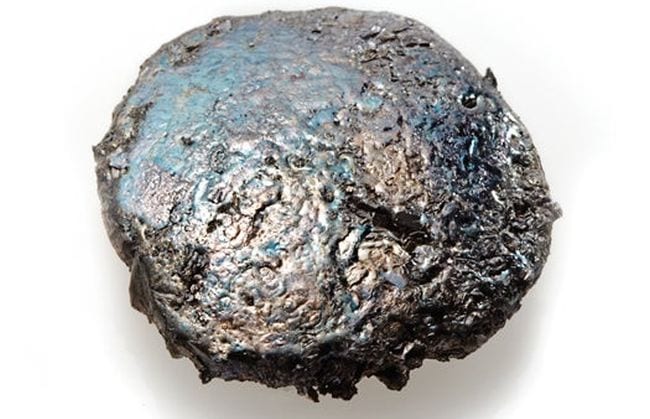
Bismuth is a really cool metal with a rainbow sheen. Information technology'southward also an ingredient in Pepto-Bismol, and past carefully following the procedures at the link, you lot can isolate a chunk of this amazing heavy metal.
Learn more: Popular Science
xvi. Plough flames into a rainbow
You'll need to become your hands on a few different chemicals for this experiment, only the wow cistron will make information technology worth the effort! (Click through to the YouTube link for an explanation of how this one works.)
17. Test and sort elements
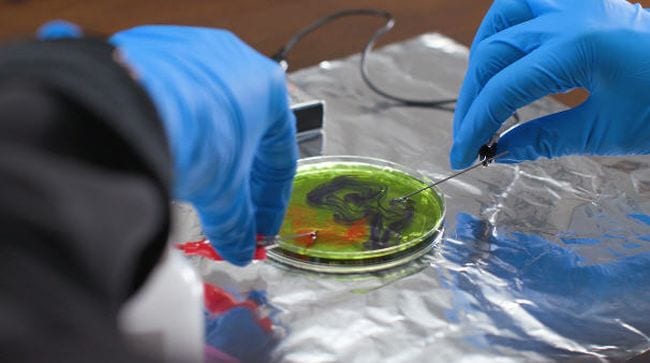
Elements in the periodic tabular array are grouped past metals, nonmetals, and metalloids. Merely how do chemists determine where each element belongs? This ready-to-get science kit contains the materials you need to experiment and notice out.
Learn more: Metals, Nonmetals, and Metalloids/Ward's Science
18. Discover the size of a mole
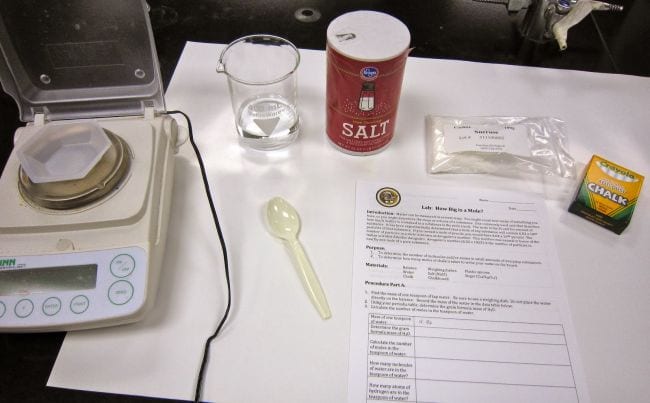
The mole is a key concept in chemistry, so it's important to ensure students really sympathise it. This experiment uses simple materials similar table salt and chalk to make an abstract concept more concrete.
Learn more: How Big is a Mole?/Amy Brown Science
19. Cook up candy to learn mole and molecule calculations
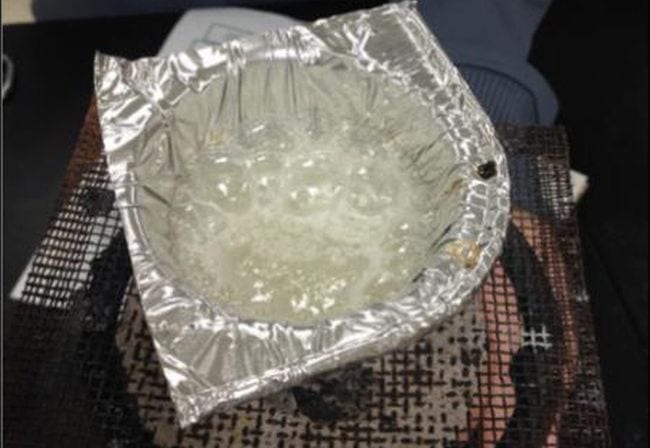
This edible experiment lets students make their own peppermint hard processed while they calculate mass, moles, molecules, and formula weights. Sweet!
Learn more than: Candy Chemistry/Dunigan Science TpT
20. Brand soap to empathise saponification

Have a closer expect at an everyday particular: soap! Students use oils and other ingredients to make their own soap, learning about esters and saponification.
Learn more: Saponification/Chemistry Solutions TpT
Physics Experiments for High School
When you think of physics scientific discipline experiments for high school, the first affair that comes to mind is probably the classic build-a-bridge. But in that location are plenty of other means for teens to get hands-on with physics concepts. Hither are some to try.
21. Boil water in a paper cup
Logic tells us we shouldn't set a paper cup over a heat source, right? Even so it'south actually possible to eddy h2o in a paper cup, without burning the cup up! Acquire virtually heat transfer and thermal conductivity with this experiment. Go deeper by trying other liquids similar dear to see what happens.
22. Blast music with the assist of magnets

We spend a lot of time telling teens to plow down their music, so they'll appreciate the chance to turn it upward for in one case! Using strong magnets and an amplifier (both bachelor on Amazon), plus a few other supplies, they'll build a speaker and measure how the magnets touch on the volume.
Learn more than: Newspaper Speaker/Science Buddies
23. Construct a light bulb
Emulate Edison and build your ain simple light bulb! You can plow this into a science off-white project by experimenting with dissimilar types of materials for filaments.
24. Employ the Leaning Tower of Pisa to explore equilibrium
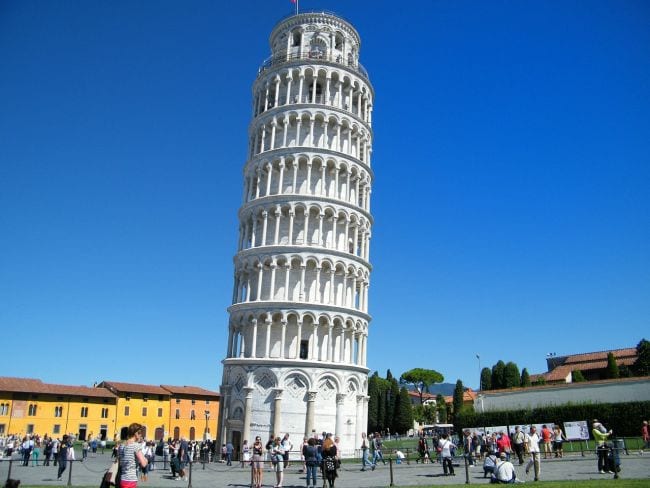
Everyone who sees it has to wonder: why doesn't that tower autumn over? Notice out with this experiment that explores equilibrium and the center of mass. Explore further by determining how changing the shape or size of the tower would bear on its equilibrium.
Acquire more: Leaning Belfry Experiment/Science Fair Extravaganza
25. Measure the speed of lite—with your microwave
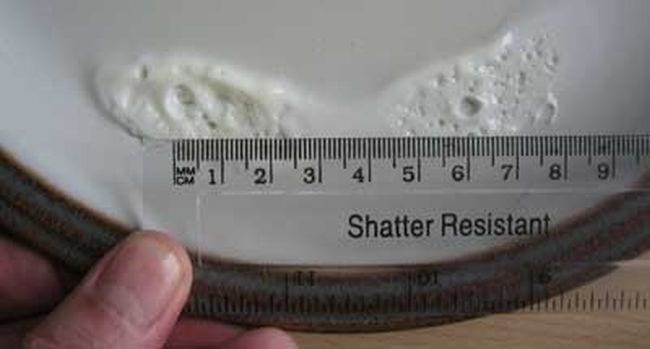
Catch an egg and caput to your microwave for this surprisingly elementary experiment! By measuring the distance between cooked portions of egg whites, you'll be able to summate the wavelength of the microwaves in your oven, and in turn, the speed of light.
Learn more: Microwave Speed of Lite/Science Buddies
26. Generate a Lichtenberg figure
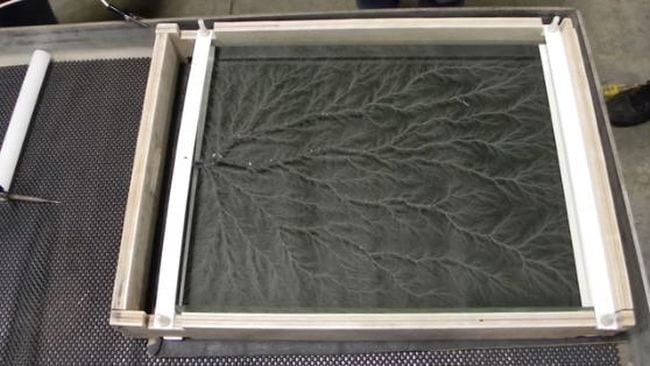
See electricity in action when you generate and capture a Lichtenberg figure with polyethylene sheets, wood, or even acrylic and toner. Change the electric intensity and materials to see what types of patterns you can create.
Acquire more than: Science Notes
27. Build your own Newton's Cradle
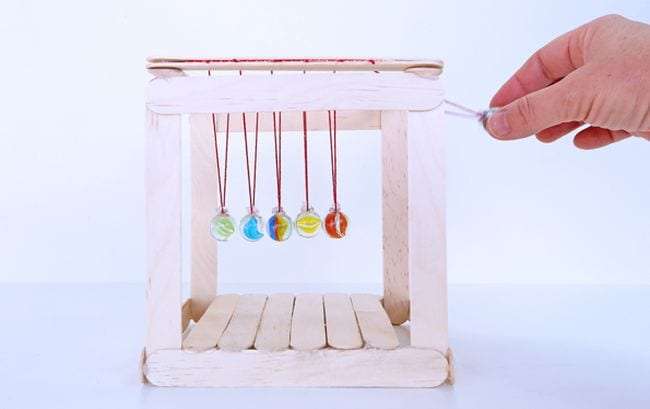
Newton's Cradle demonstrates the concept of momentum—and it's really fun to play with! Challenge students to pattern and build their own, experimenting with unlike materials or changing up the number of balls to encounter how it affects momentum.
Larn more: Blubbering Dabble Do
28. Explore the ability of friction with sticky note pads
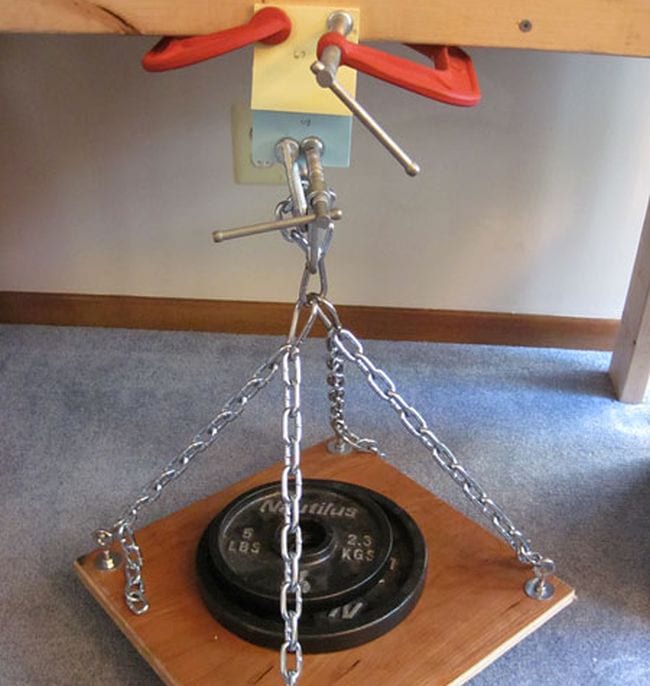
Ever attempt to pull a piece of paper out of the middle of a big stack? It's harder than yous think it will be! That's due to the power of friction. In this experiment, students interleave the sheets of two sticky annotation pads, so measure how much weight it takes to pull them autonomously. The results are astonishing!
Learn more: Sticky Notes Friction/Science Buddies
29. Bounciness balls to explore stored energy and energy transfer
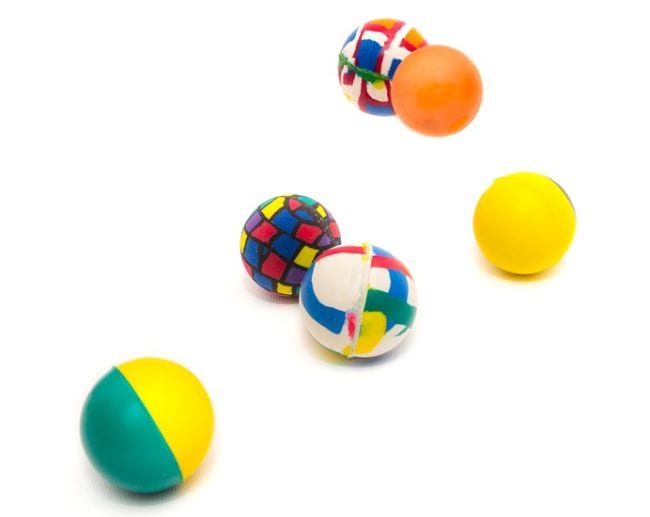
Learn about potential and kinetic energy by bouncing balls and measuring their heights on each rebound. This is ane of those classic physics science experiments for high school that students are sure to enjoy!
Acquire more: Rebound Experiment/Science Buddies
30. Build a cloud chamber to prove background radiation

Ready to dip your toe into particle physics? Larn about background radiation and build a deject chamber to bear witness the existence of muons.
Learn more than: Background Radiations/Science Buddies
Technology Experiments for High School
Engineering involves the hands-on application of multiple types of science. Teens with an interest in designing and building will especially savour these STEM claiming science experiments for high school. They're all terrific for science fairs, besides.
31. Peer into an infinity mirror
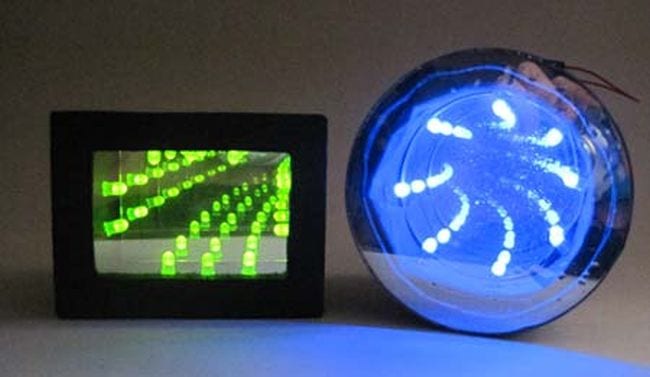
Optical illusions are mesmerizing, but they too help teach kids most a variety of science concepts. Blueprint and build a mirror that seems to reflect lights on and on forever. The supplies are basic, merely the affect is major!
Larn more: Infinity Mirror/Science Buddies
32. Design a heart rate monitor
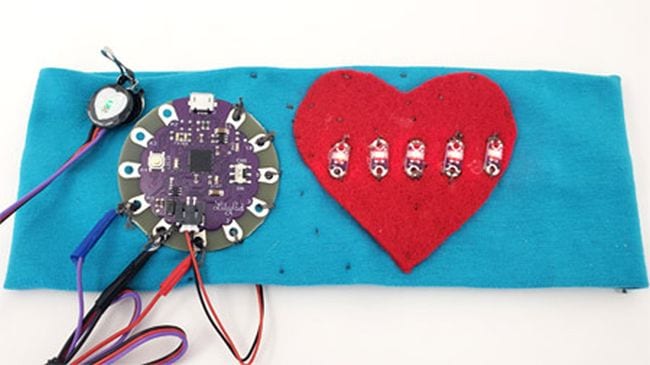
Smartwatches are ubiquitous these days, and so pretty much anyone can vesture a eye rate monitor on their wrist. But tin can you lot build your own? Information technology takes some specialized supplies, but they're not hard to track downward. Buy items like an Audino Lilypad Board on Amazon.
Acquire more: Heart Rate Monitor/Science Buddies
33. Race 3-D printed cars
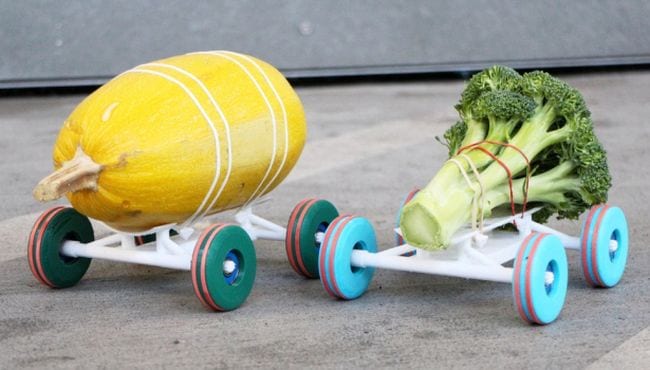
3D printers are a curiosity of the modern era, and budding engineers should definitely larn to utilize them. Use Tinkercad or a like program to design and print race cars that can support a defined weight, then see which tin roll the fastest! (No 3D printer in your Stem lab? Cheque the local library; many of them accept 3D printers available for patrons to utilize.)
Learn more: 3D Printed Cars/Instructables
34. Launch a model rocket
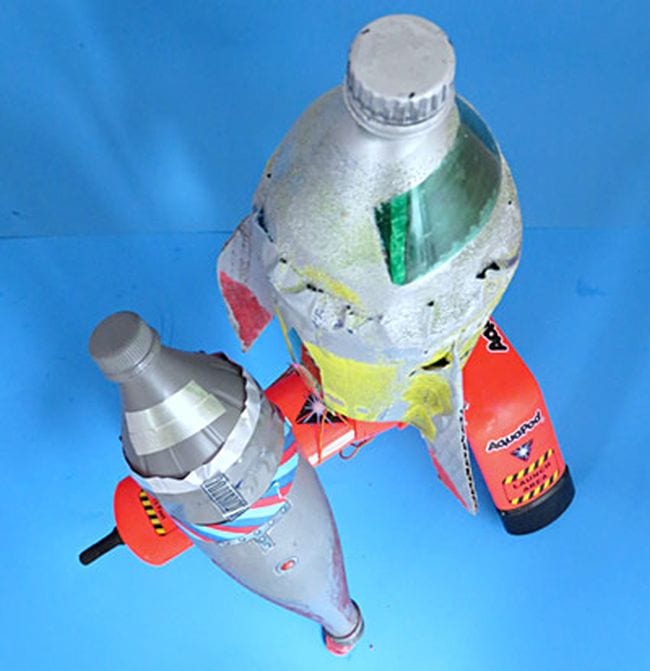
Canteen rockets are some other 1 of those classic scientific discipline experiments for loftier school classes, and for adept reason! The technology involved in designing and launching a rocket capable of carrying a specified payload involves the practical awarding of all sorts of concepts. Plus, information technology's fun!
Larn more: Bottle Rockets/Science Buddies
35. Grow veggies in a hydroponic garden
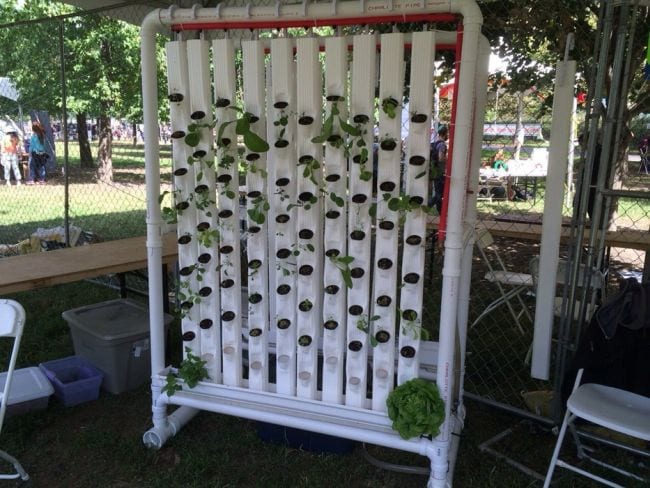
Hydroponics is the gardening wave of the future, making it easy to grow plants anywhere with minimal soil required. For a science fair engineering challenge, design and construct your own hydroponic garden capable of growing vegetables to feed a family unit. This model is but one possible selection!
Learn more: Hydroponics/Instructables
36. Grab items with a mechanical claw
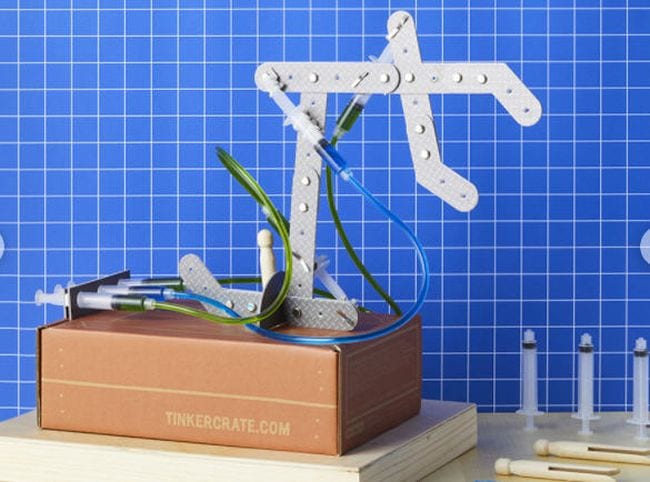
Delve into robotics with this engineering project! This kit includes all the materials y'all need, with complete video instructions.
Larn more: Hydraulic Hook/KiwiCo
37. Play volleyball with machines
Challenge your students to design and build machines that volition volley a ping pong ball back and along, using merely basic materials. They can even compare their results to those from students around the world!
Learn more: Volleyball Challenge/Science Buddies
38. Construct a crystal radio
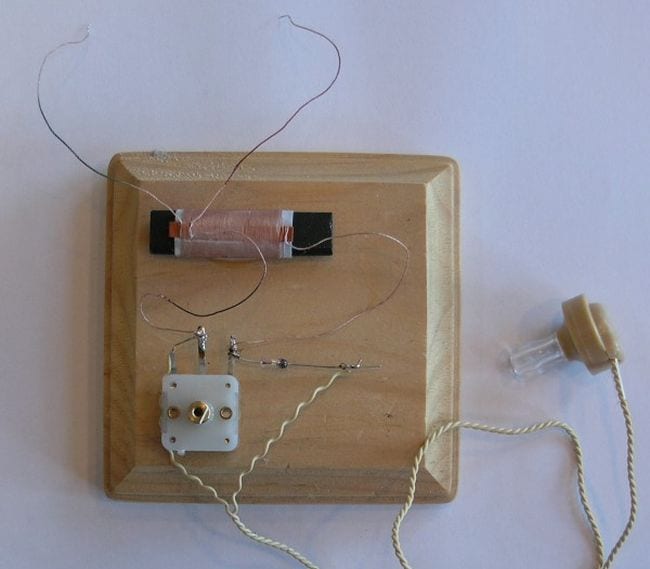
Return to the early days and build a radio from scratch! This makes a absurd scientific discipline fair project if you experiment with different types of materials for the antenna. It takes some specialized equipment, but fortunately, Dwelling Science Tools has an all-in-ane kit for this project.
Larn more: Crystal Radio/SciToys
39. Build a burglar alarm
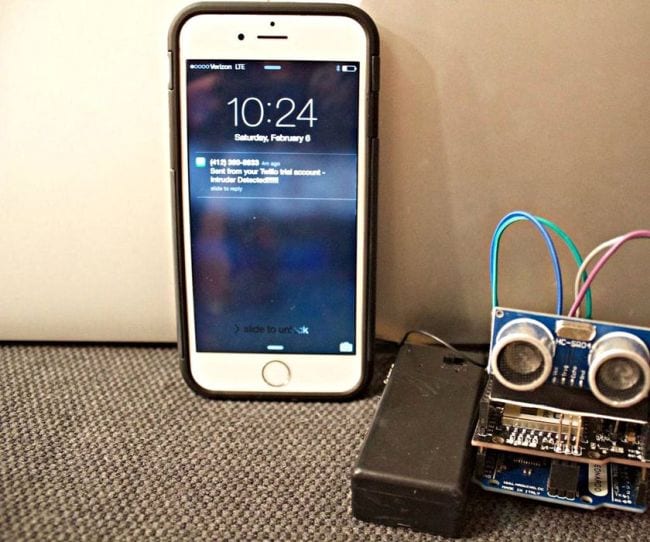
The claiming? Set up a organization to alert yous when someone has broken into your house or classroom. This tin take any form students can dream upwardly, and you lot can customize this Stalk loftier schoolhouse scientific discipline experiment for multiple skill levels. Go on it uncomplicated with an alarm that makes a sound that tin exist heard from a specified distance. Or kicking it up a notch and require the warning arrangement to ship a notification to a cell telephone, like the project at the link.
Learn more: Intruder Alarm/Instructables
40. Walk across a plastic bottle bridge
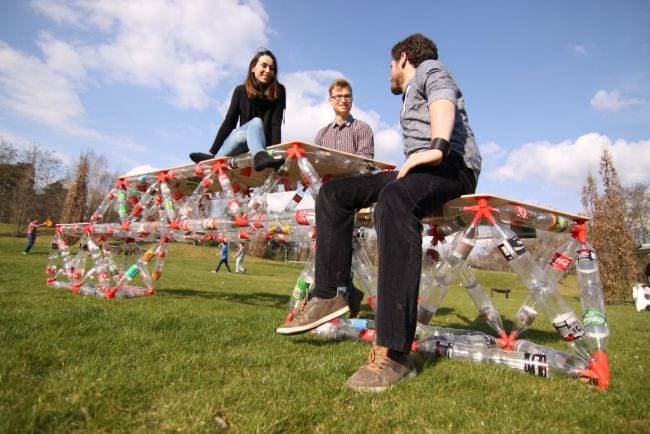
Balsa wood bridges are OK, but this plastic canteen span is really impressive! In fact, students tin can build all sorts of structures using the concept detailed at the link. Information technology'south the ultimate upcycled STEM challenge!
Larn more: TrussFab Structures/Instructables
Looking for more? Check out the Best Science Websites For Middle and Loftier Schoolhouse.
Plus, get all the latest teaching tips and tricks when you sign up for our newsletters!

Source: https://www.weareteachers.com/science-experiments-for-high-school/
Post a Comment for "You Performed the Experiment Using Air Which We Know Is Actually"